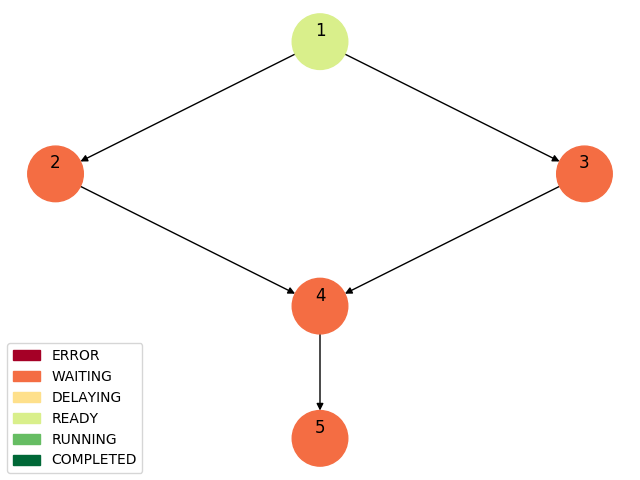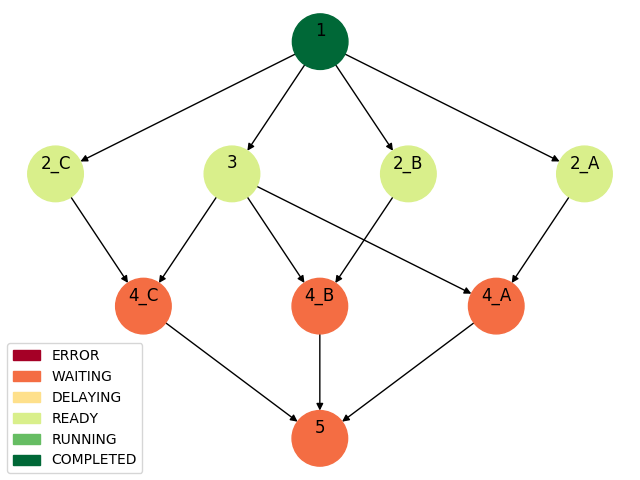Example 4: A more complicated workflow with follow
Workflow definition#
{ "workflow_id": "example4", "config": {}, "tasks": [ { "id": "1", "execution_configurations" : [ { "function_def_id" : "firstFunc", "priority" : 1 } ], "successors": [ "2", "3" ], "properties": { "position": "start" } }, { "id": "2", "execution_configurations" : [ { "function_def_id" : "multFunc", "priority" : 1 } ], "successors": [ "4" ], "properties": { "scatter": "predecessor_outputs['1']['tile']" } }, { "id": "3", "execution_configurations" : [ { "function_def_id" : "lambda_func2", "priority" : 1 } ], "successors": [ "4" ] }, { "id": "4", "execution_configurations" : [ { "function_def_id" : "multFunc", "priority" : 1 } ], "successors": [ "5" ], "properties": { "follow": "2" } }, { "id": "5", "execution_configurations" : [ { "function_def_id" : "lambda_func2", "priority" : 1 } ], "successors": [] } ]}
If the function firstFunc generates the same output as the examle above, and task 2 is expanded in the same manner:
Then task 4 will be expanded to tasks 4_A, 4_B, 4_C, each of which becomes a successor of one of the tasks expanded from task 2:
DAG representation#
 When task 1 completes, task 2 can be expanded. In addition, task 4 can also immediately be expanded (without waiting for all task 2 instances to complete) since its multiplicity depends on the multiplicity of task 2, which has already been decided.
When task 1 completes, task 2 can be expanded. In addition, task 4 can also immediately be expanded (without waiting for all task 2 instances to complete) since its multiplicity depends on the multiplicity of task 2, which has already been decided.
